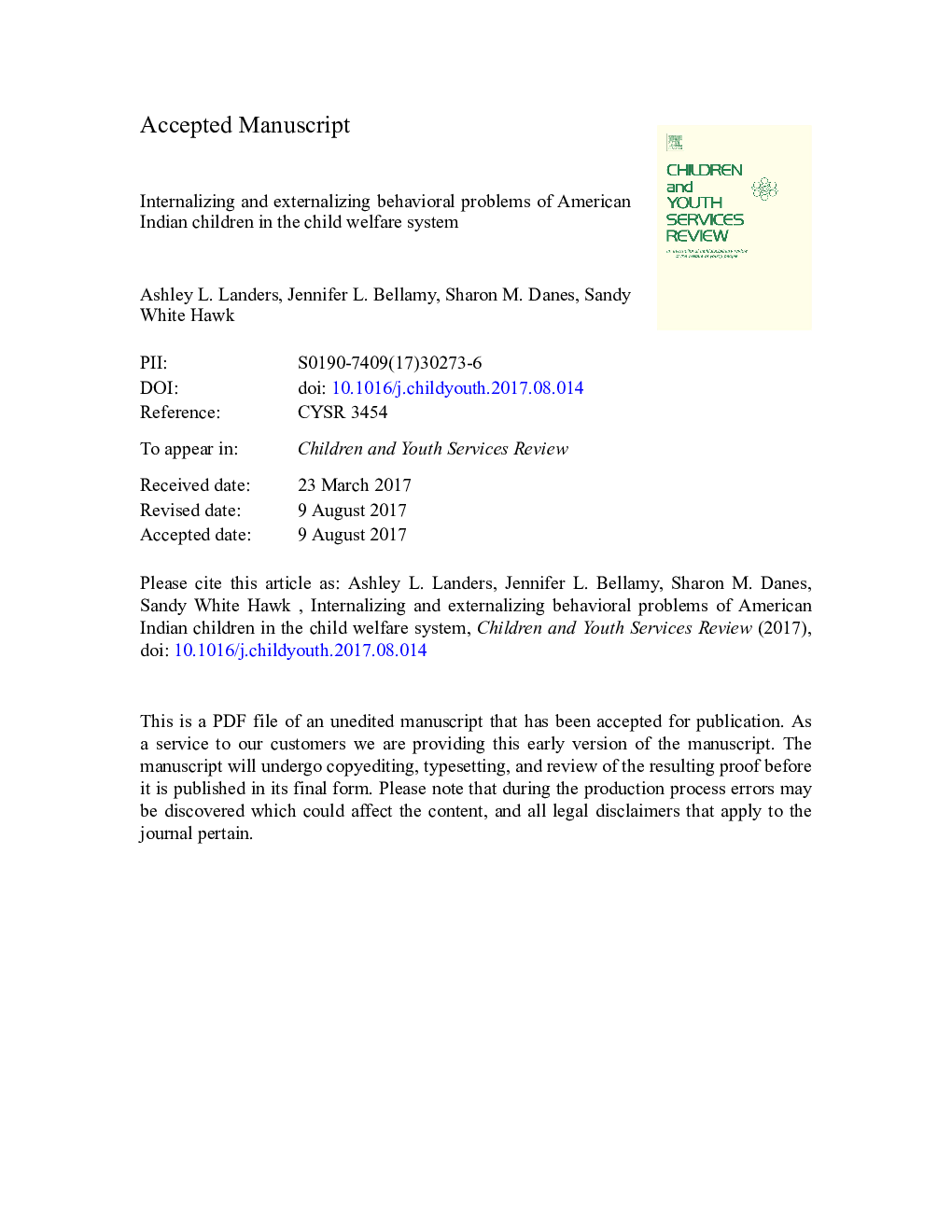| Article ID | Journal | Published Year | Pages | File Type |
|---|---|---|---|---|
| 4936283 | Children and Youth Services Review | 2017 | 37 Pages |
Abstract
Children involved in the child welfare system display elevated or clinically significant behavioral problems. However, there is a dearth of literature on the behavioral problems of American Indian children following child welfare involvement. Grounded in Patterson's Family Adjustment and Adaptation Response theory, this study fills that gap. Baseline, 18-month, and 36-month follow-up data from the National Survey of Child and Adolescent Well-being were utilized. The sample (n = 3498) consisted of American Indian, African American, and Caucasian children ages 2-16 at baseline (M = 8.13 years old, SD = 3.85) and 51.7% were female. Nearest neighbor propensity score matching analyses were used to estimate the effect of race on clinically significant internalizing and externalizing behavioral problems. Findings suggest that although externalizing behavioral problems do not differ based on race after controlling for other important factors, internalizing behavioral problems do differ. American Indian children are more likely to display clinically significant internalizing behavioral problems.
Related Topics
Health Sciences
Medicine and Dentistry
Perinatology, Pediatrics and Child Health
Authors
Ashley L. Landers, Jennifer L. Bellamy, Sharon M. Danes, Sandy White Hawk,
